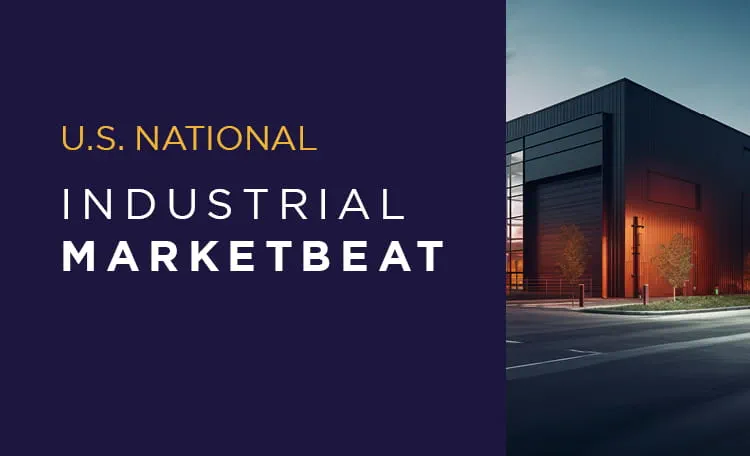The Future of Warehousing and Distribution
Reflections from the Interchange Conference
When I took the stage at the INTERCHANGE 2025 alongside Rick McDonald, I knew we were in for an engaging, eye-opening conversation. Rick's extensive experience in the supply chain world, from his time as Chief Supply Chain Officer at The Clorox Company to his current advisory work, brought an invaluable perspective to this session. For me, it was an opportunity not only to share insights but also to learn from a true industry leader.
Here’s a look back at some of the most impactful themes we explored as we discussed the future of warehousing and distribution.
Lessons from a Chaotic Few Years
I kicked off by asking Rick to reflect on the past five years, which have been nothing short of revolutionary in the world of supply chain management. From pandemic disruptions to inflation and even a cyberattack that had Clorox operating on paper for months, Rick’s insights were illuminating.
“It was crazy,” Rick said. “First COVID, then hyperinflation, and then the cyberattack. It was the most stressful time of our lives, but it taught us a lot about leadership.” He shared a critical lesson learned during those turbulent times—that decisions don’t always need to wait for perfect data. At Clorox, they had to move fast to keep manufacturing plants operational while prioritizing the health and safety of their people.
“These were leadership lessons,” Rick explained. “One of the most important was that culture matters. The trust and collaboration we had as a team were critical to navigating those difficult moments.”
Hearing Rick break it down reinforced the importance of agility and culture in overcoming challenges, not just in supply chains but in any complex system.
Digital Transformation and the Push for Fluency
One of the session’s key takeaways was the ongoing digital transformation in our industry. Rick shared his thoughts on the importance of digital fluency, especially for leaders. “I don’t know how you can lead from here forward without being digitally fluent,” he said. And he’s right.
We’re at a point where digital assets are reshaping everything from decision-making to operations, but adoption isn’t without its hurdles. Rick shared a story from Clorox’s transition to a new supply planning platform. Despite investing in state-of-the-art technology, they found that many of their employees were reluctant to leave their Excel spreadsheets behind. The lesson here was clear: Transformation is as much about change management as it is about technology.
It’s not just about introducing tools; it’s about helping teams understand the “why” behind the change. Rick emphasized the importance of leaders having a vision for digital transformation and communicating it effectively. This hit home for me. Without a clear roadmap, even the best technology can’t deliver results.
Labor Challenges and Automation
Labor shortages are another pressing issue facing our industry. During our discussion, Rick pointed out a staggering prediction from the National Association of Manufacturers—that by 2030, 2 to 3 million manufacturing jobs in the U.S. could go unfilled.
At Promat in Chicago earlier this year, both Rick and I saw a surge of innovation designed to address this issue, from robotics to co-bots (robots designed to collaborate with humans). But what really intrigued Rick was the back-office automation aimed at reducing repetitive, transaction-heavy tasks.
“If someone’s job is highly repetitive and data-heavy, that’s a great place to focus automation,” Rick noted. He talked about the need to find the right balance between human and digital assets to operate at the speed of the consumer.
Rick’s points made me think deeply about how companies like ours can help guide clients through these changes. Warehousing isn’t just about physical space anymore; it’s about synchronizing people, technology and processes in entirely new ways.
The Future of Facility Design
On the distribution and manufacturing side, Rick shared insights into facility design and how it’s evolving to meet modern needs. Smaller, regional facilities closer to consumers are becoming more prevalent, he explained, with footprints ranging from 150,000 to 250,000 square feet. He also talked about preparing for the rise of automation and autonomous vehicles, both inside and outside the facility.
“Think about clear heights,” he said. “We’re at 30 to 40 feet consistently now, but I can see the new normal going to 45 feet or more to make better use of space. Occupiers are looking to densely leverage their space and investment.”
This idea of efficiently designed facilities, equipped to balance automation and human labor, is critical for future-proofing supply chains.
Final Thoughts
Looking back on our session at Interchange, I left the stage feeling inspired. Rick’s experience and perspective were a reminder of the incredible challenges our industry has faced and overcome, but also of the exciting opportunities ahead.
From digital transformation to labor shortages and facility design, it’s clear that warehousing and distribution are evolving rapidly. The lessons we learned from Rick highlighted one central truth for me: whether it’s technology, culture, or strategy, success comes down to adaptability.
If there’s one takeaway I want to leave you with, it’s this: The future isn’t something you wait for, it’s something you build. And building it means staying focused on where you need to go, whether that’s with your team, your tools or your facilities. It’s a privilege to work in a field that’s so dynamic, and I’m excited to see what we’ll create together in the years to come.
